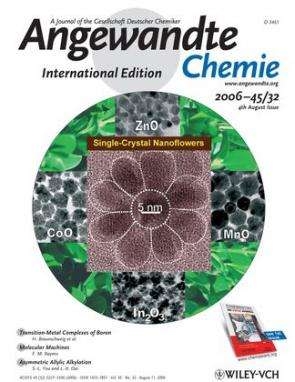Nanoflowers blossom

University of Arkansas researchers have examined the mechanisms underlying the synthesis of three-dimensional nanocrystals in solution and have created a systematic method for the directed synthesis of such nanocrystals.
Xiaogang Peng, professor of chemistry and biochemistry, postdoctoral fellows Arun Narayanaswamy and Narayan Prahdhan, all of the University of Arkansas, and Huifang Xu, a professor at the University of Wisconsin-Madison, reported their findings in the Journal of the American Chemical Society and in the German journal Angewantde Chemie.
“This is the first general strategy for creating single 3-D crystals with no defect,” said Peng. “This will provide researchers with a new set of building blocks – a new platform to work with.” The JACS article outlines the mechanism with indium oxide nanocrystals. The Angewandte Chemie article addresses the generality of this new strategy.
“We applied it to other systems, and it seems to be very successful,” Peng said. The other systems included well-known semiconductors such as zinc oxide, magnesium oxide, cobalt oxide and zinc selenide.
The crystals look like flowers, with a “center” and “petals.” The properties of the crystalline solutions differ depending upon the source material used, but they have one thing in common – the formation of single, uniform crystals.
The key to creating these crystalline nanoflowers turns out to be using less of a good thing. One and two-dimensional nanocrystals require the addition in solution of organic molecules called ligands to remain stable. Usually scientists saturate a solution with these organic molecules to ensure stability, but Peng and his colleagues had used a lesser amount in an indium oxide solution. When they examined it using a high-resolution transmission electron microscope, they noticed what at first looked like an imperfection in the solution.
“When we see something strange, we typically don’t let it go. We try to understand why it happened,” Peng said. Upon closer examination, they determined that the structures were perfectly formed, 3-D single crystalline nanocrystals. After more experimentation, they concluded that limiting the organic ligand protection so that it left the nanocrystals slightly unstable created a situation where they would stay in perfect crystalline formation.
“If you want to use these systems for their optical properties, the perfection of the crystals becomes critical,” Peng said.
Source: University of Arkansas, Fayetteville





















